Thistle cheese of the Canary Islands
Exploring the mixed milk quesos with various coagulants, and a local sheep breed.
Sitting close to the coast of Africa, the Canary Islands played an important role in the Spanish colonization of the Americas. The islands have many cultural influences, with connections to the Caribbean, Cuba, Venezuela, as well as the south of Spain and Portugal. The cuisine contains lots of fish, bananas, mango, avocado, a red pepper sauce called Mojo, and small local potatoes. Coffee is grown, and grapes for wine. I spent 10 days on Gran Canaria, exploring the diversity of climates, and learning from pastoralist cheesemakers.
The north gets hit by storms coming off the Atlantic, and this November it is green after early winter rains. The mountainous center is clad in pine forests, with inactive calderas, and sculpted rock pinnacles at the summit. The south side is a semi desert, sitting in a rain shadow, and has a completely different feel. Dairying is popular in the hill pastures of the north, and some still do a transhumance to high elevation summer grazing areas. A locally adapted sheep breed remains dominant here. The Canarian sheep has roots in several Spanish breeds such as Churro and Merino, their coat patterns are diverse, and the texture of their wool varies considerably. Shepherding and cheesemaking have a long history in the small mountain villages that are less touched by the tourism economy, and construction free-for-all of the coast. The lifestyle is less popular now, but seems fairly strong, with regional governmental support, and the promotion of a DOP cheese in the region of Moya and Fontanales.
I decided to come here to learn about this cheese, called Flor de Guia. In particular, I wanted to document the practice of using thistle flowers to coagulate this cheese, that must contain at least 60% canarian sheep milk. The DOP actually has 3 versions, with different coagulants used:
Flor de Guia - is coagulated with thistle, and is often heavy on the sheep milk. It is eaten after 20-35 days of ripening, once sufficient proteolyis has softened the paste, and fruity, savory, bitter flavors have developed. It is generally consumed by 45-50 days, after which it becomes more bitter. With this limited shelf life, makers only produce enough to fill their orders, with the rest of the milk used for the longer aged versions.
Media Flor - made with half thistle coagulant and half animal rennet. They will mix in more goat and/or cow milk with this cheese, and it can be aged many months. The flavors are fascinating, with the strong thistle character tamed down. We tasted one made with farm produced sheep rennet, and it was a complex blend of animal piquant spicy balancing the thistle flavors of savory, vegetal, and fruit.
Queso de Guia - is made with solely animal, or synthetic rennet (100% chymosin, known as FPC, is common). This is a hard cheese that can be aged 1 year or longer. There are still some makers who produce their own rennet, but this is becoming rare as EU food safety standards become more rigorously enforced. A few older makers I spoke to lament the loss of farm produced goat and sheep rennet, and continue making it for the cheeses they consume at home. They enjoy the spicy lipase flavor originating from abomasums dried with coagulated milk inside. It seems to be common for older folks in many places to appreciate these flavors, that are being lost as local rennet making disappears.
I came here to taste these 3 cheeses, and talk to the makers about how they differ, and why they would make one or the other. This is part of my ongoing research project for a scholarship I received from the Daphne Zepos Teaching Endowment, centered on the production and use of various coagulants. The blending of coagulants is a method that I feel has a lot of potential to allows makers to generate interesting textures and flavors.
I didn’t realize when I started this research 5 weeks ago that I would focus on thistle so much, but I find the history of its use and the cheeses that evolve out of its unique properties fascinating. I refer to it as a plant coagulant, to distinguish it from true rennet, which in my mind signifies the use of the enzymes derived from abomasums. These enzymes (mainly chymosin) have the role of coagulating milk in the stomachs of young mammals, turning the liquid into a solid so that nutrients can be more effectively obtained. Plant coagulants contain enzymes that happen to perform a similar function, but this is coincidental, they didn’t evolve to coagulate milk. In my mind these, and synthetic forms of chymosin, are rennet substitutes. Plants such as thistle don’t coagulate milk in the same way, and can cause rapid breakdown of the interior of the cheese, and bitter flavors. But this is not always the case, and there are different methods of working with thistle, to produce cheeses which derive defining and nuanced character from it. It appears that the levels and types of fat and protein, linked to the breed of livestock and season, are crucial factors.
The use of thistle in the Canarias seems to be linked to settlement by people from Portugal, and the adjacent Spanish region of Extremadura. It is in these regions that the use of thistle is still common, mainly with sheep milk. Its use on Gran Canaria has become an object of culinary heritage, with makers continuing to use it out of pride in their cheese, and cultural history. Two of the makers I spoke to collect and dry the thistle themselves, from their own property or the highlands where it is common. Two species are used, cynara cardunculus var. ferocissima and cynara scolymus. But most purchase a liquid from the mainland. I am not sure how this purchased product is made, or how it differs from the DIY version. These are the types of questions I hope to get answers to, as I collect this information to share with cheesemakers, mongers, and enthusiasts around the world.
Photo credit: Alexander Pomper

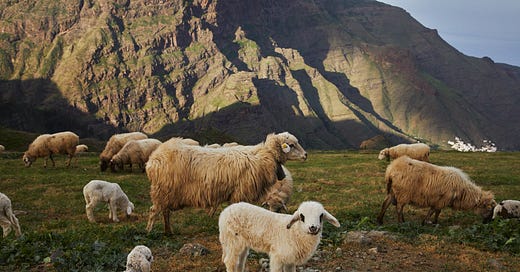



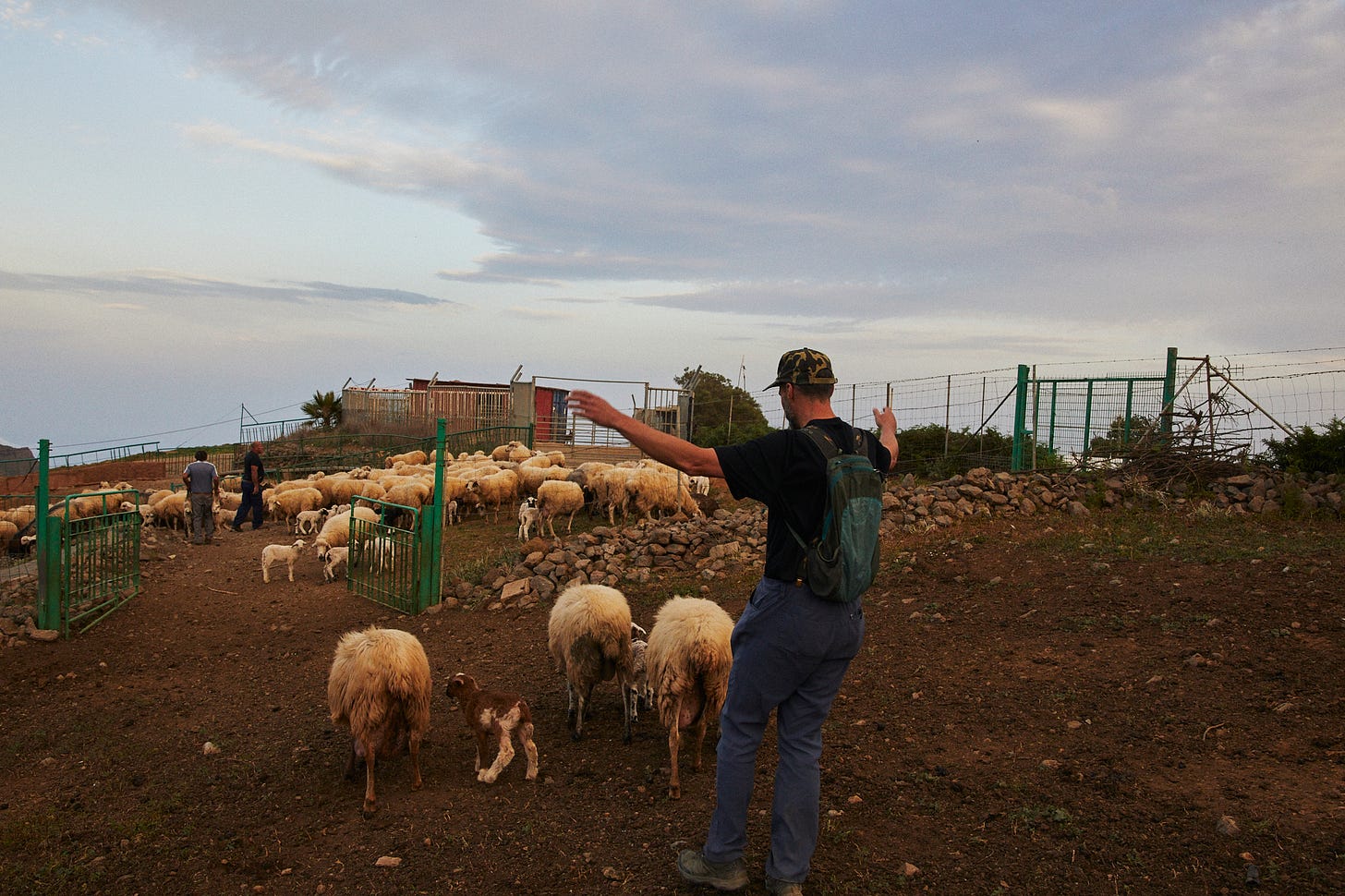
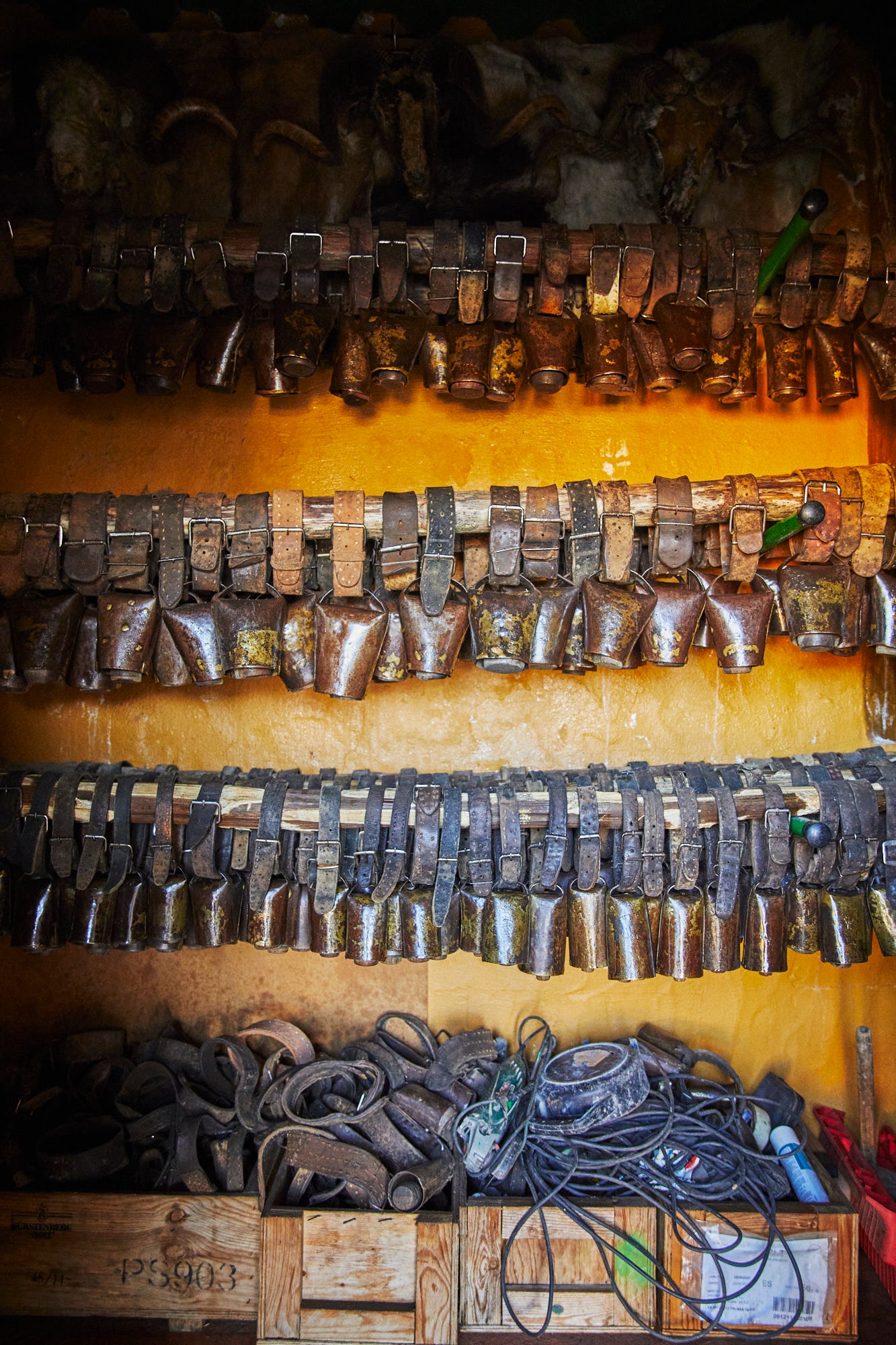
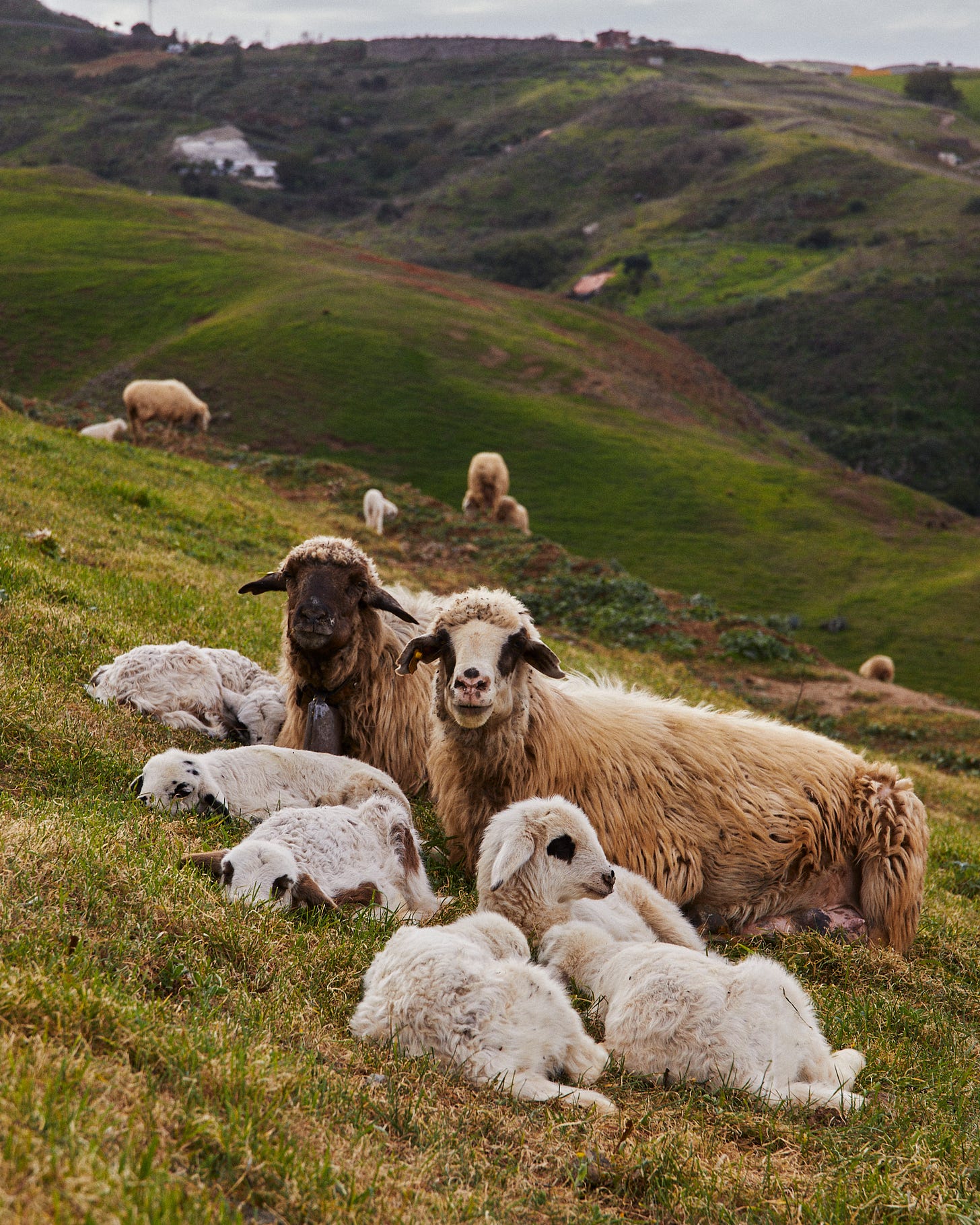


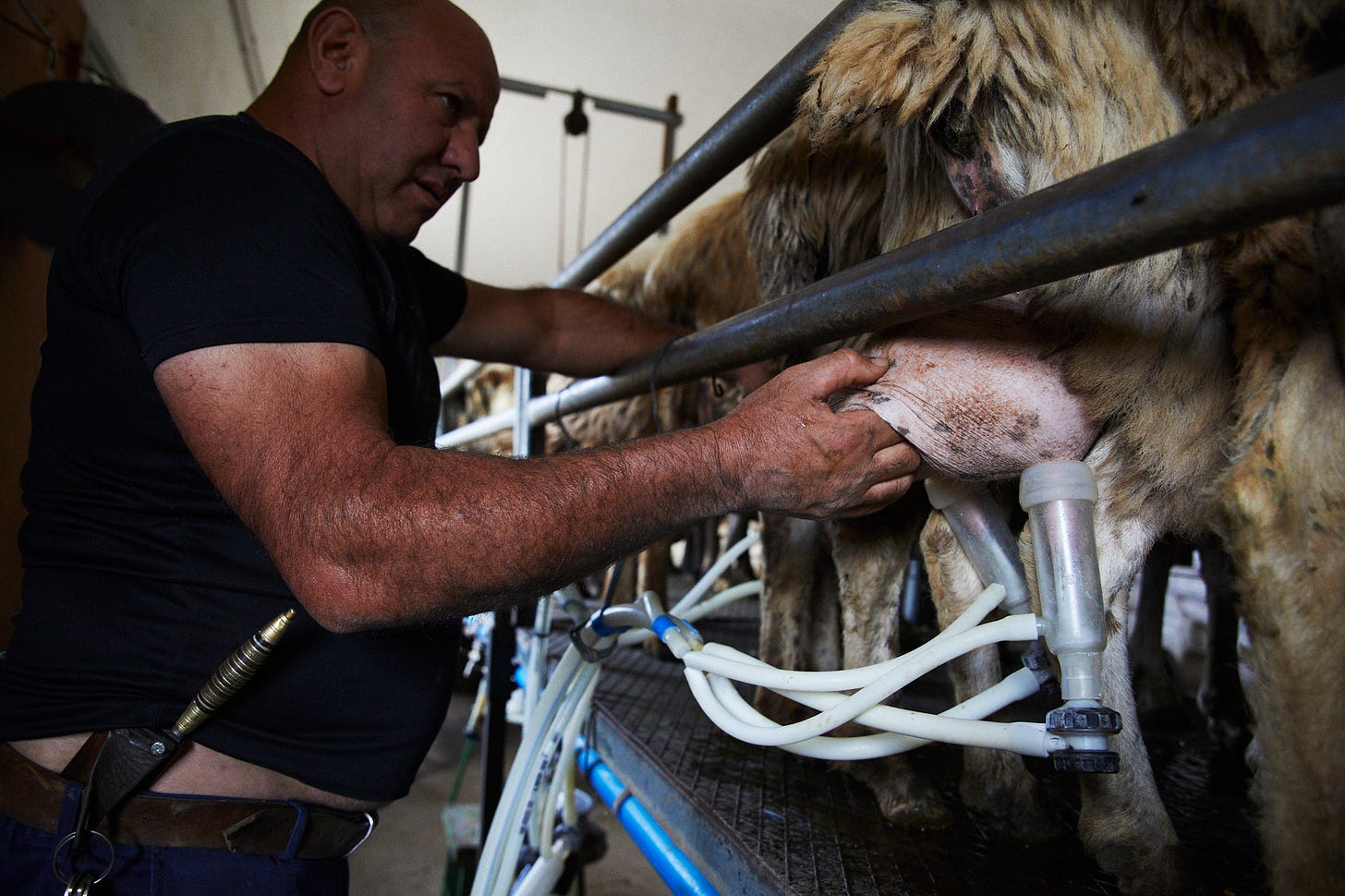
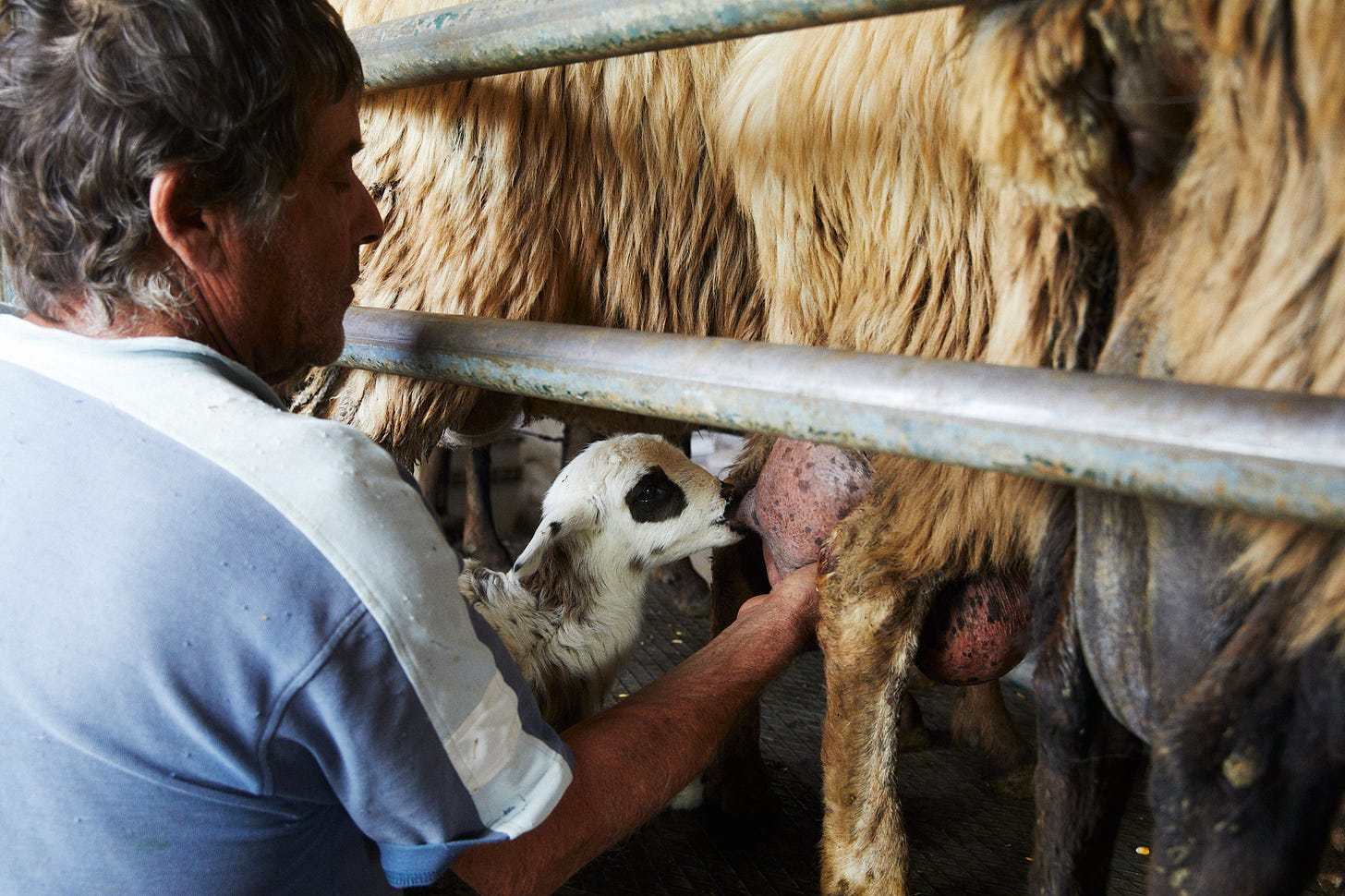
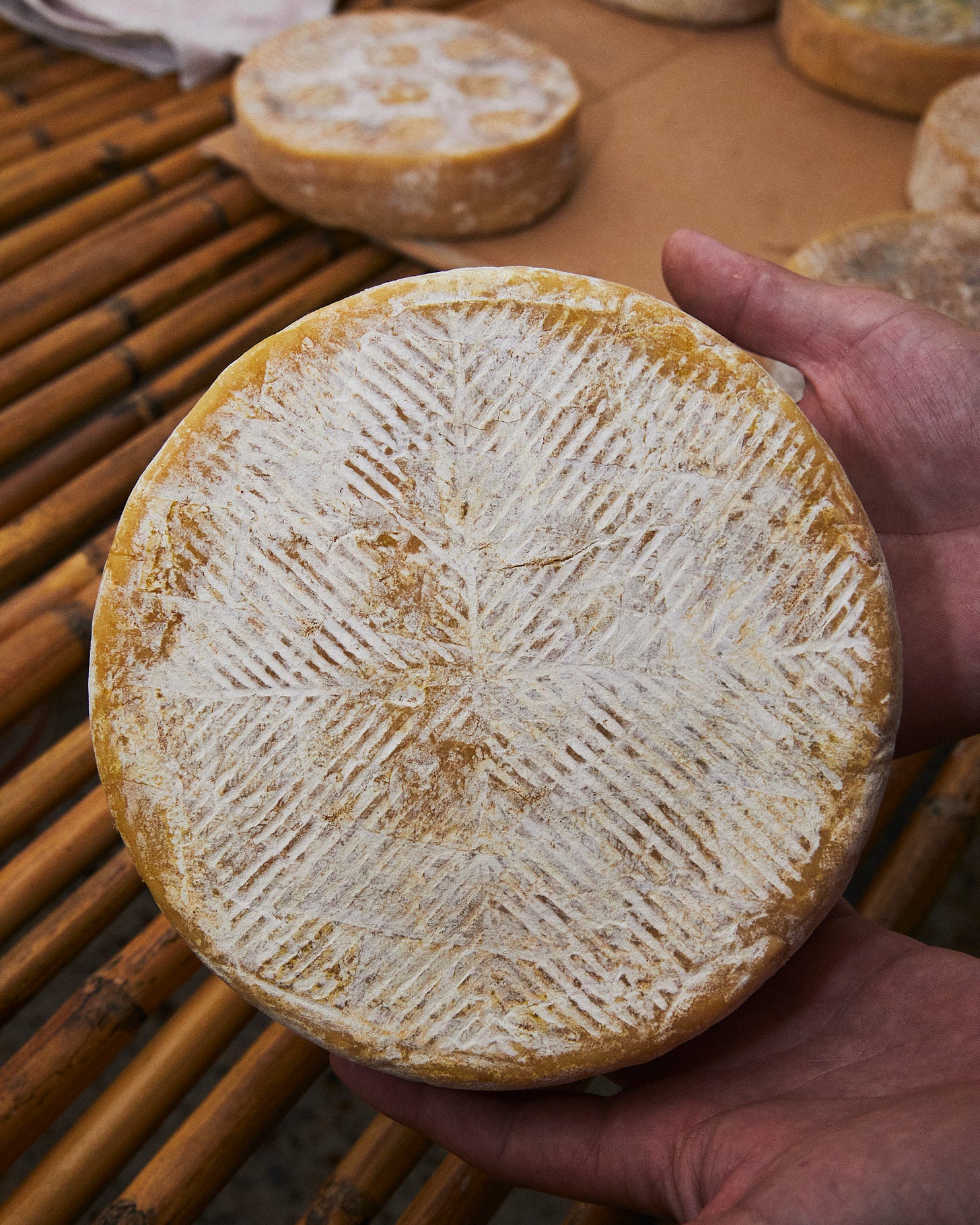
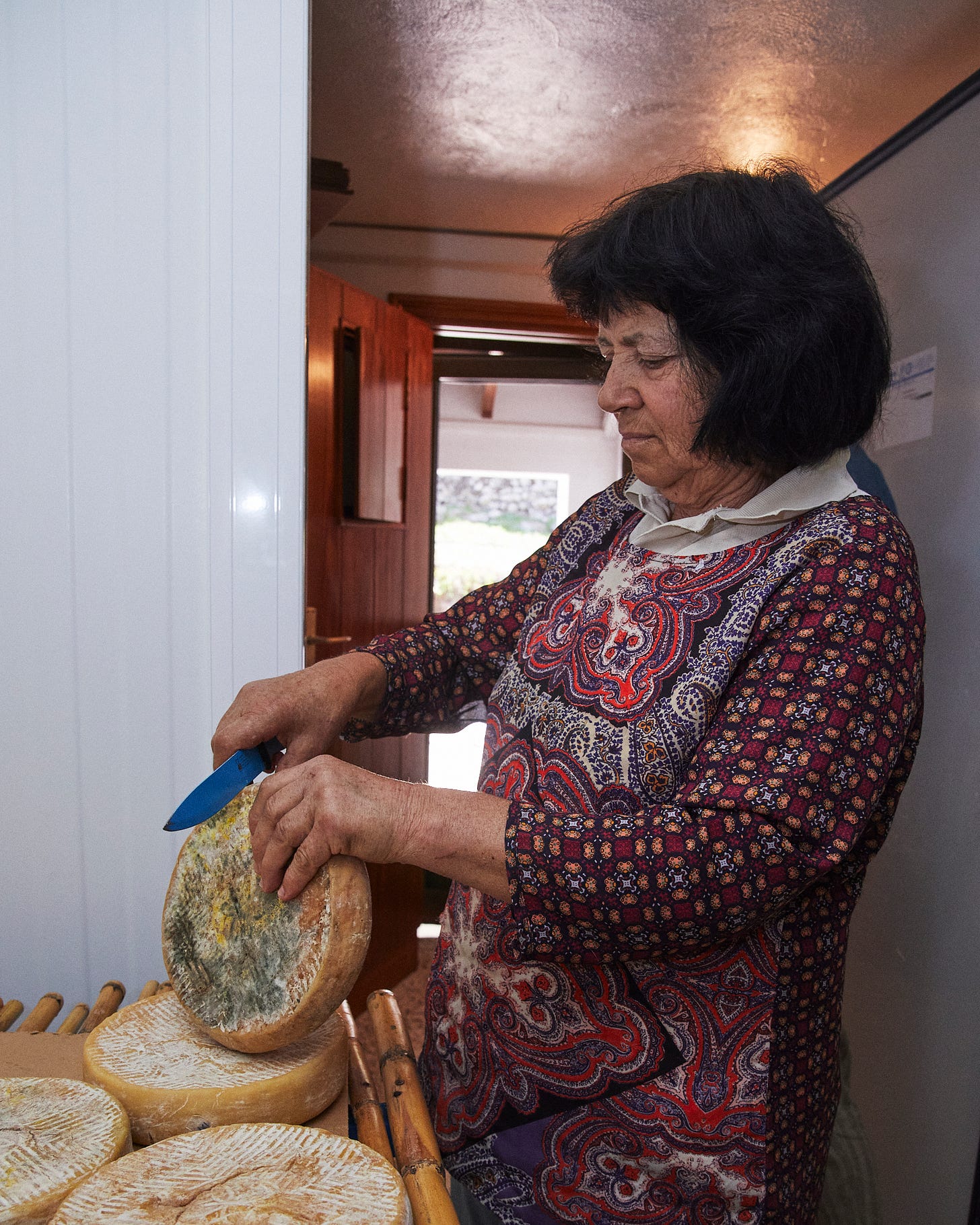
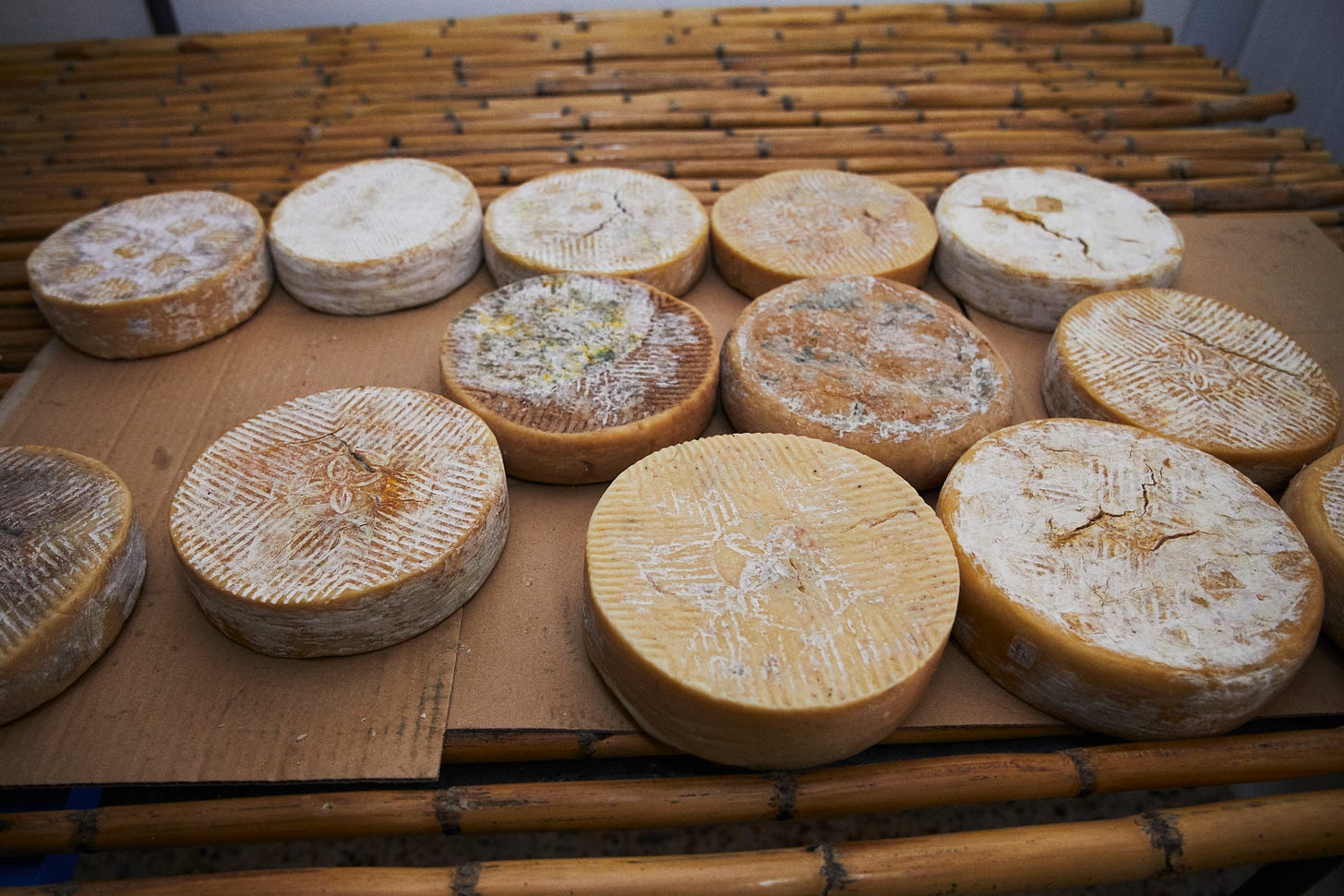
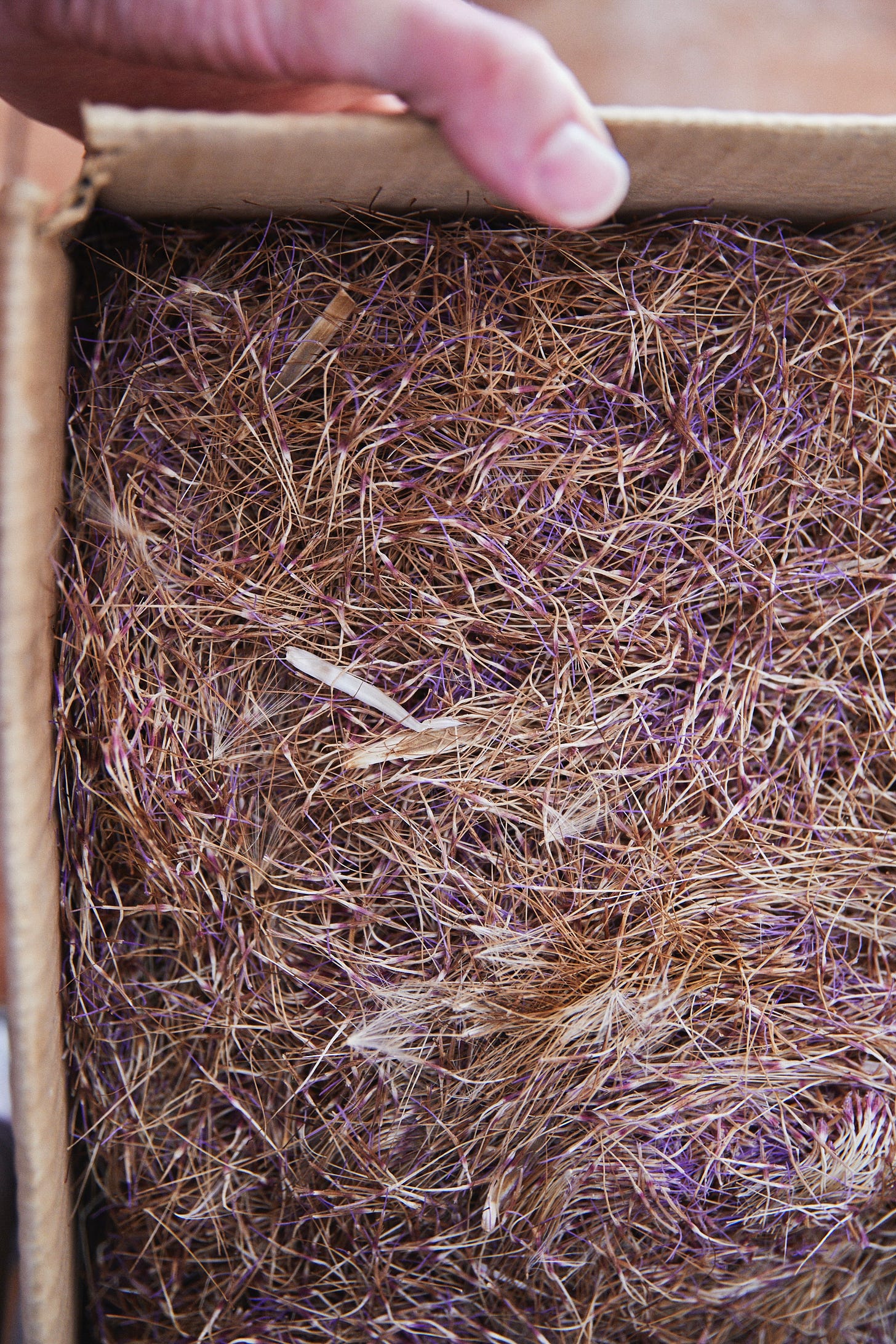
Great read Trevor!
Did you notice or see the use of any other parts of thistle plants, or was always parts of flowers? Probably has to do with enzymatic abundance, something which also plays a big role in traditional brewing across Africa and elsewhere (https://www.beer-studies.com/en/Fundamentals/Six-brewing-pathways/Pathway-4-plants).
Great to see that the local knowledge about environments are still alive!
If they require winter rain for grass green-up, does this mean that the north side of Gran Canaria has a mediterranean climate, or do they get summer rains too? Are they able to make cheese in the dry season? My main question is really, whether or not they change their use of milk coagulants (ratios of types, quantities, etc) as the milk changes with the seasons? Or do the recipes and cheese making processes remain the same and the character of the cheeses vary with the seasons? Or both?
oh and one more side question. Are the reed racks used for aging the cheeses made of Canary reed? Is this the home, or at least namesake of the canary reed "Arunda," that we have filling riparian zones on the west coast of the US?
As always, thanks for your dedication to learning and sharing. May your flock always be full